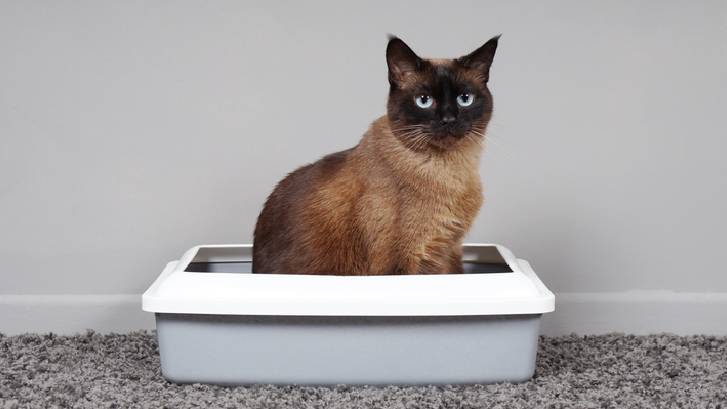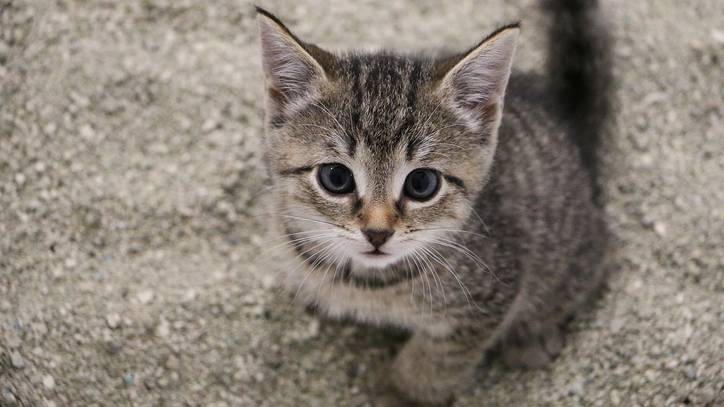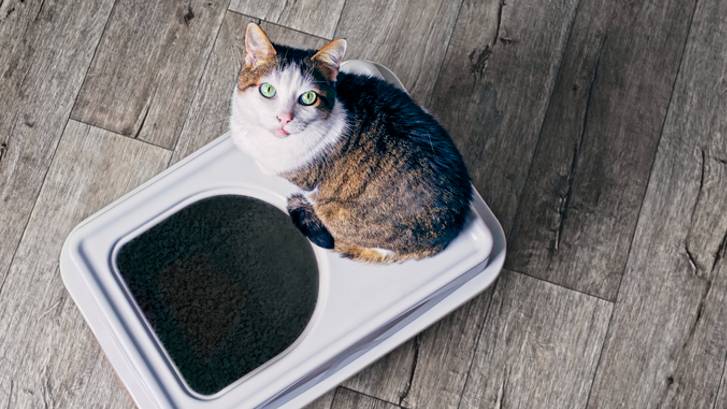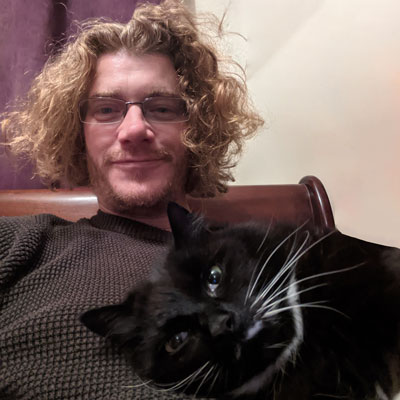Is cat litter flushable? How to dispose of cat litter in an eco-friendly way
There are numerous brands promising you can, but is cat litter flushable in reality?

There are a lot of brands giving you the option, but is cat litter flushable? Although technically these non-clay-based litters made of paper, corn, wheat or pine can be put down the toilet, there are some strong reasons why you shouldn't. So much so that some American states like Rhode Island have prohibited it, and California has asked flushable litter manufacturers to add a label to discourage people from disposing of it in the toilet.
The convenience promised by cat litter that can be disposed of as easily as a quick toilet flush is an attractive one, and a seemingly sensible and eco-friendly alternative to bagging it up and sending it to sit in a landfill site, but sadly it isn't that simple. It can still cause problems for your plumbing and septic tank – and even if it can cope with it, there are still some quite dire health implications if cat waste enters the water system.
Which cat litter can be flushed – technically?
Cat litter advertised as flushable is any litter that is made of biodegradable materials that don't expand too much in contact with water. Clay-based litter is the cheaper and most common cat litter material, but this doesn't biodegrade and so can't be put in compost heaps or flushed. As it is so absorbent it can expand in your waste pipes and cause a blockage.
Flushable litter is made from natural, compostable materials. These include paper, corn, wheat, cavassa, and wood. It is advertised as a convenient and ecologically friendly way of getting rid of your cat's waste. Sounds like a win-win right? Sadly, that's not the full story.

Flushable cat litter – pros and cons
Pros
1. Flushable cat litter is environmentally friendly
Flushable cat litter is clearly better for the environment as it is designed to biodegrade. That's why the manufacturers can say it is safe to flush down the toilet. Clay-based litter doesn't rot and so all those bags of waste just end up filling landfill sites. Even the way the clay is sourced - through strip mining – is bad for the environment. Flushable cat litter is clearly better for the environment as it is compostable – it will still reduce in volume to nothing over time, even if it ends up in landfill.
2. Flushable cat litter is convenient
What could be simpler than flushing away your cat's waste into a toilet? The only thing easier would be if you trained your cat to go to the toilet themselves. Flushable cat litter is definitely convenient in the short-term, but as we'll soon see, it can cause you a lot of hassle in the longer term.
Cons
1. Flushable cat litter can clog pipes
Clay litters expand up to 15 times their original size when exposed to water, so they will easily clog waste pipes, so that's why flushable litters are advertised as safer for your toilet. However, the volume of waste when emptying a tray is a lot more than toilets (and their connecting pipes) are designed to deal with. Toilets, especially water saving toilets, will likely not even be able to flush away the amount of cat litter in the tray in one go. This means multiple flushes, which can waste water, so if the idea is to be environmentally friendly, flushing litter may not be the best way to go about it. Cat feces also becomes very solid when they dry, making it another potential clogging agent.
Get the best advice, tips and top tech for your beloved Pets
2. Septic tanks and waterer treatment systems aren't designed for cat flushable litter
Even if it gets through your pipes, your septic tank won't like it. Most aren't designed to break down materials like cat fecal matter and litter, so you will just be creating a problem for yourself down the line by clogging up your tank. Water treatment centres are only designed to deal with human waste, and cat excrement can cause all kinds of problems if left untreated, as we will see next.
3. Flushable cat litter causes health issues
Cat excrement is a very dangerous substance, and most water treatment plants can not make it safe. It is classed as a pollutant by the United States Environmental Protection Agency which states that the group of polluting materials it is included with "…can harm fish and wildlife populations, kill native vegetation, foul drinking water, and make recreational areas unsafe and unpleasant."
It can also contain the parasite Toxoplasma gondii, which won't be killed by water treatment centers or septic tanks. This means it will then continue into the water system or surrounding water table and infect other animals, including humans. Although typically dealt with by our immune systems, it can be deadly, especially for those with compromised immune systems. Marine and river life is already showing high levels of this kind of parasitic infection near waste outlets, and the likely cause is – yep – cat litter being flushed down the toilet.

What to do if you do flush cat litter
If you do want to try flushable cat litter, and think your plumbing system is up to it, here are a couple of tips on how to reduce the potential issues of this kind of litter disposable.
- Separate the cat waste from the litter and bin it separately, so the harmful fecal matter doesn't pollute the water ways or block your pipes.
- Don't flush the whole tray in one go. Flush it in smaller portions as most toilets, especially water-saving toilets, won't be able to deal with it in one flush.
How to dispose of cat litter safely
There are some good reasons to use 'flushable' cat litter, as the litter itself will biodegrade and so can be composted. Provided you separate the soiled litter and waste into the bin, you won't be polluting the environment, and you will reduce the amount of waste going to landfill considerably. To find the cat litter that's right for you, check out our guide to different types of cat litter or find the best cat litter choices on the market right now.
Jamie Middleton is a freelance editor and writer who has been editing and creating content for magazines and websites for over 20 years. As well as writing about the pets he loves, he has helped create websites about tech and innovation like TechRadar.com, Innovate UK and TechSPARK, written programmes for music festivals, books on inventions and architecture, TV listings magazines, and edited publications about cars such as Lexus, Toyota and Jaguar. In his spare time he writes fiction books and poetry - or at least he does when he is permitted to by his cat Pirate, who enjoys the warmth of laptops too much to allow being creative to get in the way.

